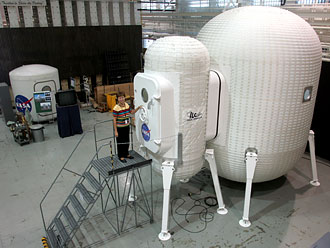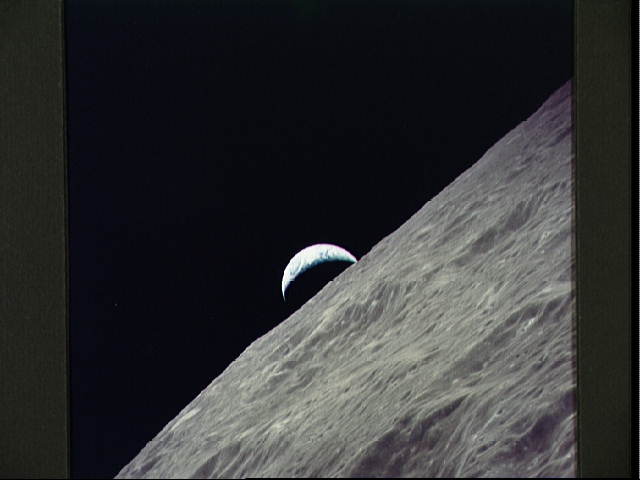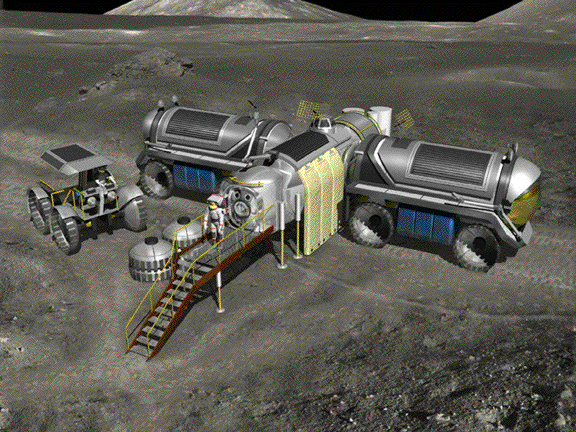After I had started to pull over NASA’s HSFNEWS mission status reports to my blog, I thought it is a good idea to do this in the future, too. After all, NASA doesn’t even archive HSFNEWS, even though it is highly interesting. So here we go with the first non-shuttle issue ;) I hope you enjoy reading them.
Report #H07-251
NASA TESTS LUNAR HABITAT IN EXTREME ANTARCTIC ENVIRONMENT
 WASHINGTON – NASA will use the cold, harsh, isolated landscape of Antarctica to test one of its concepts for astronaut housing on the moon. The agency is sending a prototype inflatable habitat to Antarctica to see how it stands up during a year of use.
WASHINGTON – NASA will use the cold, harsh, isolated landscape of Antarctica to test one of its concepts for astronaut housing on the moon. The agency is sending a prototype inflatable habitat to Antarctica to see how it stands up during a year of use.
Agency officials viewed the habitat Wednesday at ILC Dover in Frederica, Del., as it was inflated one last time before being packed and shipped to Antarctica’s McMurdo Station. NASA is partnering on the project with the National Science Foundation, Arlington, Va., which manages McMurdo Station, and ILC Dover, the company that manufactured the prototype structure. All three organizations will share data from the 13-month test, which runs from January 2008 to February 2009. An inflatable habitat is one of several concepts being considered for astronaut housing on the moon.
"Testing the inflatable habitat in one of the harshest, most remote sites on Earth gives us the opportunity to see what it would be like to use for lunar exploration," said Paul Lockhart, director of Constellation Systems for NASA’s Exploration Systems Mission Directorate, Headquarters, Washington.
NASA’s Constellation Program is working to send humans back to the moon by 2020. After initial sorties, the astronauts will set up a lunar outpost for long-duration stays, and they will need a place to live. The agency is developing concepts for habitation modules that provide protection for the astronauts and are easy to transport to the lunar surface.
"To land one pound of supplies on the lunar surface, it’ll require us to launch 125 pounds of hardware and fuel to get it there," Lockhart said. "So our habitation concepts have to be lightweight as well as durable. This prototype inflatable habitat can be taken down and redeployed multiple times, and it only takes four crew members a few hours to set up, permitting exploration beyond the initial landing area."
The structure looks something like an inflatable backyard bounce house for children, but it is far more sophisticated. It is insulated and heated, has power and is pressurized. It offers 384 square feet of living space and has, at its highest point, an 8-foot ceiling. During the test period, sensors will allow engineers to monitor the habitat’s performance.
The National Science Foundation also is interested in lighter, easier-to-assemble habitats. It currently uses a 50-year-old design known as a Jamesway hut, which is bulky and complex in comparison to the habitat being tested. Modern variations on the Jamesway, although lighter, are still rigid and difficult to ship, with limited insulation. During the test of the new inflatable habitat, the foundation will study improvements in packing, transportation and set up, as well as power consumption and damage tolerance for this newest variation of the concept.
To enable lunar exploration, the Constellation Program is developing a new fleet of spacecraft and rockets, as well as transportation and power systems for use on the surface of the moon. More information about NASA’s space exploration plans is available at:
http://www.nasa.gov/constellation
The inflatable habitat is being developed under NASA’s Innovative Partnerships Program. For more information, visit:
http://www.ipp.nasa.gov
Video of the send-off event is expected to be available Thursday on the NASA Television Video File. For NASA TV downlink, schedule and streaming video information, visit:
http://www.nasa.gov/ntv




